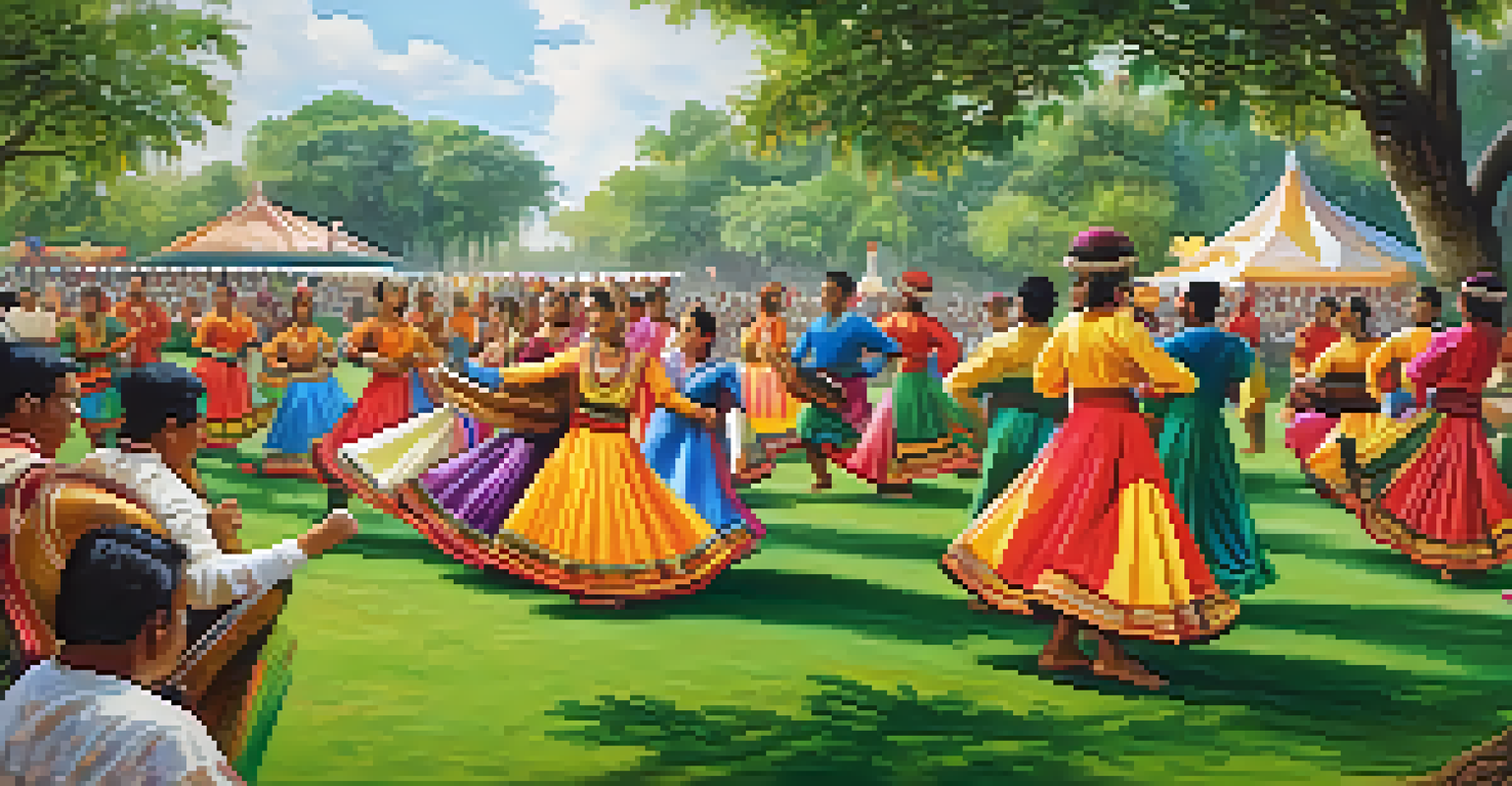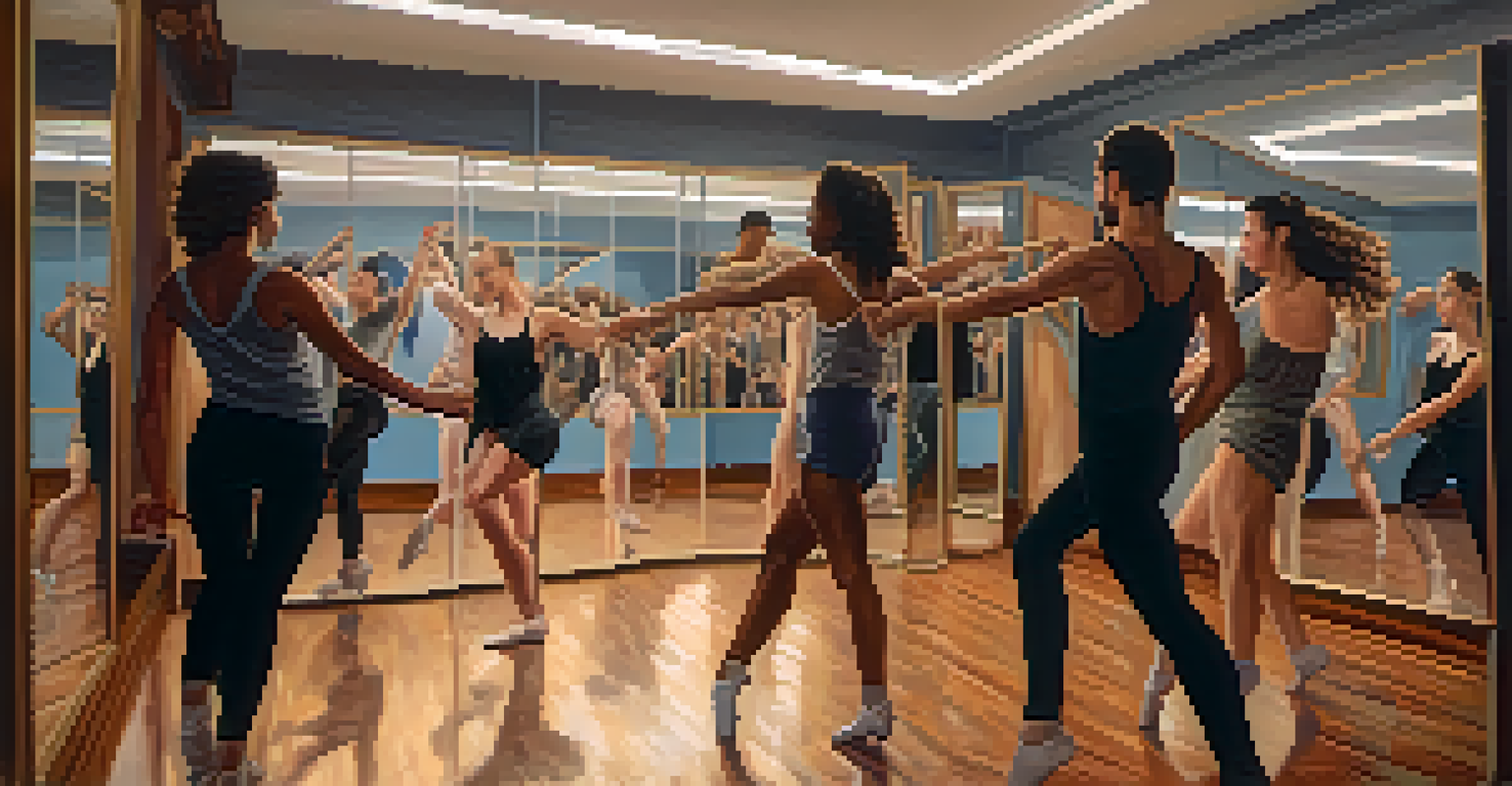Influence of Dance on Gender Roles in Global Cultures

Understanding Gender Roles in Cultural Contexts
Gender roles refer to the expectations and behaviors society considers appropriate for men and women. These roles are not universally fixed; they vary widely across different cultures and historical contexts. Understanding these roles in relation to dance can provide insights into broader societal norms and values.
Dance is the hidden language of the soul.
In many cultures, dance serves as a powerful medium for expressing and challenging these gender roles. For example, traditional dances may reinforce stereotypes, while contemporary dance forms often break down those barriers, allowing for a more fluid interpretation of gender.
As we explore the influence of dance on gender roles, it's essential to acknowledge that this relationship is dynamic. Dance not only reflects societal norms but also has the potential to reshape perceptions and encourage dialogue about gender equality.
Traditional Dances and Their Gender Implications
Traditional dances often embody the cultural values and expectations of a society. In many cultures, specific dances are reserved for men or women, reinforcing the idea that certain movements or styles are gendered. For example, in some Native American communities, men's dances often portray strength and bravery, while women's dances may emphasize grace and nurturing.

These traditional roles can limit personal expression and reinforce stereotypes, but they also provide a sense of belonging and identity within the community. For many, participating in these dances is a way to connect with their heritage and honor cultural practices.
Dance Reflects Gender Norms
Dance serves as a cultural mirror, showcasing and sometimes challenging the gender roles and expectations present in society.
However, as societies evolve, the strict boundaries that dictate who can dance what are increasingly blurred. Many dancers challenge these norms, using traditional forms to express their individuality and advocate for more egalitarian interpretations of gender roles.
Contemporary Dance as a Medium for Gender Exploration
Contemporary dance offers a unique platform for exploring and redefining gender roles. Unlike traditional forms, contemporary dance encourages experimentation and self-expression, allowing performers to challenge societal norms. This shift has led to greater visibility for diverse gender identities and expressions within the dance community.
Gender is not something that you are, but something that you do.
Choreographers like Pina Bausch and Martha Graham have used their work to confront and dissect gender dynamics. Their pieces often highlight the complexities of gender relationships, inviting audiences to reconsider their own perceptions and biases.
Moreover, contemporary dance can foster collaboration among artists of different genders, creating a more inclusive environment. This collaboration not only enriches the artistic process but also serves as a powerful statement about the possibilities of gender fluidity in performance.
Dance as a Tool for Social Change and Activism
Dance has long been a form of protest and social commentary, with many movements using choreography to challenge the status quo. Activists often employ dance as a means to address issues related to gender inequality, violence, and discrimination, making their messages resonate on a deeper emotional level.
For instance, performances like the 'One Billion Rising' campaign utilize dance to draw attention to violence against women, encouraging global participation and solidarity. Such movements demonstrate how dance can unify people around a common cause, transcending cultural and linguistic barriers.
Traditional vs Contemporary Dance
While traditional dances often reinforce strict gender roles, contemporary dance allows for greater fluidity and exploration of diverse gender identities.
By leveraging the power of movement, these activists not only raise awareness but also inspire action. The act of dancing becomes a collective expression of resilience and a call for change, showcasing the transformative potential of this art form.
Global Influences: Dance and Gender Roles Across Cultures
Dance is a universal language, and its influence on gender roles can be seen in various cultures around the world. From the flamenco of Spain to the bharatanatyam of India, each dance form carries its own gendered nuances that reflect cultural beliefs. For example, flamenco is often associated with strong female figures who assert their independence, while bharatanatyam traditionally emphasizes feminine grace.
These cultural expressions not only reveal how gender roles are constructed but also how they can be challenged. As cultural exchanges become more frequent, dancers from different backgrounds are finding inspiration in each other's traditions, leading to innovative blends that question established norms.
This global dialogue around dance and gender is vital for fostering understanding and challenging stereotypes. By celebrating diverse cultural expressions, we can appreciate the complexities of gender roles and the role dance plays in shaping them.
The Intersection of Dance, Gender, and Identity
Dance is not just about movement; it's also a significant avenue for exploring personal and collective identities. For many individuals, dance serves as a means of self-discovery, allowing them to express aspects of their identity that may not fit within conventional gender roles. This exploration can be particularly empowering for LGBTQ+ individuals who use dance to reclaim their narratives.
Through improvisation and creative expression, dancers can convey their unique experiences and challenge societal expectations. For instance, queer dance companies have emerged, providing safe spaces for performers to explore their identities and advocate for visibility within the arts.
Dance as a Tool for Activism
Through performance, dance can unite people in social movements, addressing issues like gender inequality and inspiring collective action for change.
As the dance community continues to evolve, the intersections of gender and identity become increasingly prominent. This ongoing dialogue not only enriches the art form but also encourages greater acceptance and understanding of diverse identities.
Future Directions: Dance and Gender in a Changing World
The future of dance and its relation to gender roles is an exciting and evolving landscape. As conversations around gender continue to develop, so too will the ways in which dance reflects and shapes these discussions. Artists are increasingly experimenting with gender-neutral forms and inclusive practices, paving the way for more equitable representations in dance.
Moreover, as digital platforms expand, dance has the potential to reach wider audiences, allowing for greater exchange of ideas and cultural practices. This digital revolution can amplify voices that have historically been marginalized, encouraging a more diverse dance community.

Ultimately, the ongoing exploration of dance and gender roles holds the promise of fostering understanding and change in society. As more individuals engage with dance as a form of expression and activism, we can hope for a future where gender roles are less defined, and everyone feels empowered to dance their truth.